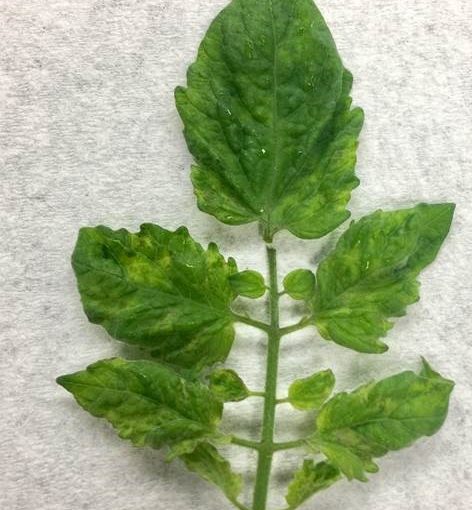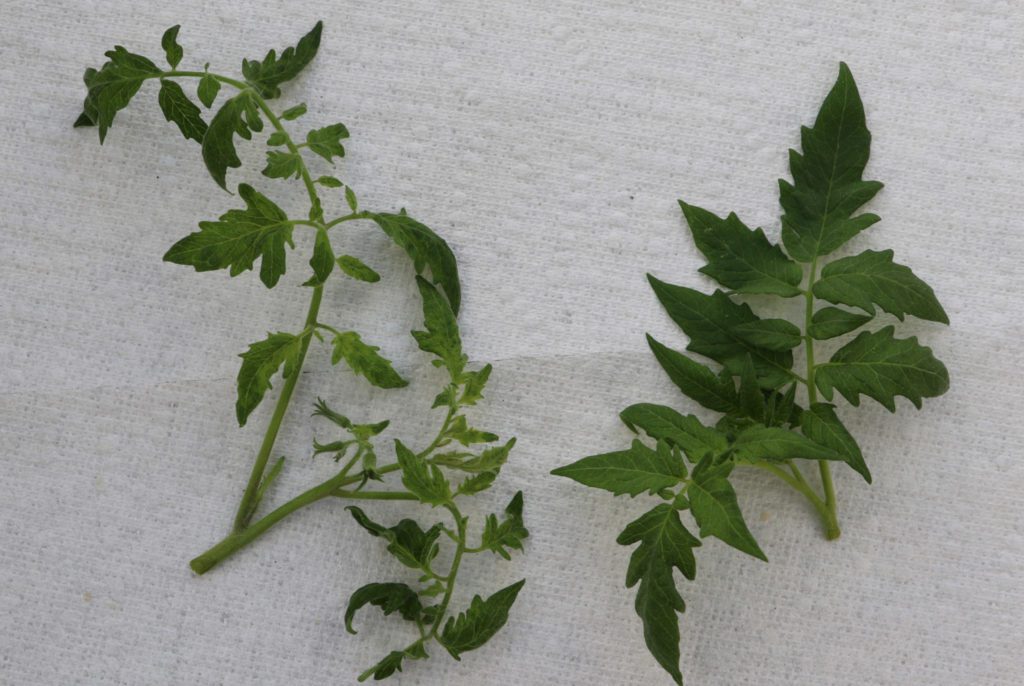Mar 19, 2020Clemson experts warn growers about new greenhouse tomato disease
A new virus has officials on alert and during the 2020 Clemson Spring Vegetable Production Meeting, growers learned what to do if they detect it in their plants.
“Tomato brown rugose fruit virus is not that common, but it is the newest, most talked about virus in tomatoes,” said Tony Keinath, a Clemson Research and Extension plant pathologist housed at the Coastal Research and Education Center in Charleston. “This disease has not been detected in South Carolina.”
The virus only attacks tomatoes grown in greenhouses. It also attacks peppers. Leaf symptoms on both tomatoes and peppers include deformed, crinkled leaves, mosaic, mottling, flecking, chlorosis and/or necrosis. Fruit symptoms include discoloration and rough brown patches or ringspots. Fruit shapes may become irregular. Veins in the calyx – leaves that surround and protect young blossoms – may become brown during early stages of fruit ripening.


This disease is found in plants’ sap as well as in seed. Management practices include planting disease-free seed and seedlings, regularly scouting plants for symptoms and isolating symptomatic plants.
The tomato brown rugose fruit virus was discovered on tomatoes in Israel in 2014 and found in a California tomato greenhouse in 2018. The disease was terminated before it could spread.
In late 2019, the virus was found in Florida on tomatoes imported from Mexico. The sampled tomatoes were destroyed. The United States Department of Agriculture’s Animal and Plant Health Inspection Service (USDA-APHIS) has since restricted imports of tomato and pepper seed lots and transplants from all countries where the virus exists, as well as restricting tomato and pepper fruit imported from Mexico, Israel and the Netherlands.
Because Canada imports tomatoes and peppers from Mexico that may be re-exported to the United States, the USDA is requiring Canada to inspect these products to ensure they are disease-free before exporting them to the United States.
“This disease has not been detected in South Carolina,” said Steven Long, assistant director of regulatory services for the Clemson Department of Plant Industry. “Currently, officials are inspecting all tomato plants and all tomato fruit that are being shipped in to the United States. If you see something you believe may be the virus, contact your local Extension agent. The agent can contact us if they believe it is the tomato brown rugose fruit virus and we can come sample the plant or plants and have tests run to determine if it is indeed the virus.”
Tests will be conducted at the USDA’s U.S. Vegetable Laboratory in Charleston.
“We do not charge for these tests,” said Kai-Shu Ling, a research plant pathologist at the research laboratory.
Weed control
In addition to disease management, growers at the spring meeting also learned about weed control from Matt Cutulle, Clemson weed specialist also housed at the Coastal REC. Swinecress, palmer amaranth, nutsedge, pigweed and goosegrass were the main weeds Cutulle discussed.
“When considering weed management, it is important you know when the critical weed-free period of your crop is,” Cutulle said. “This period is the length of time after planting when weeds must be kept at a minimum. If they aren’t controlled, weeds can hamper crop yield by depriving plants of water and nutrients they need during their early growth stage. Weed management also is important during harvest because weeds can prevent the use of harvesting equipment.”
Controlling weeds can be achieved by using conventional, organic and non-chemical methods. For more information, go to http://bit.ly/CREC_WeedControl.
Insect pest control
Alton “Stormy” Sparks, an Extension entomologist from the University of Georgia, discussed mite management and diamondback moth caterpillar pressure with participants via video conferencing. The two-spotted spider mite has a broad range of hosts, including herbaceous plants, that it can suck the life out of. Adults are about 1/7 mm long – not even 5 one-thousandths of an inch. They overwinter in tree bark cracks. Spider mites suck leaf juices, causing tiny white-to-yellow stipples to appear. When large spider mite populations feed, the stipples coalesce and leaves may turn white to yellow to grayish-brown and, then, die. Some plants are particularly susceptible to spider mite toxins and even low populations may cause leaves to die.
When scouting for spider mites, look for early signs of stippling during the beginning of hot summer weather. Examine the underside of damaged leaves for spider mites. Also look for predators, such as phytoseiid mites and lady beetles.
In dry, hot, sunny locations, spider mites may produce one generation per week. Use horticultural oil or insecticidal soap sprays for low mite populations to conserve any beneficial insects that may be present. When mite populations are high and there are no beneficial insects present, consider using a residual miticide spray. Re-evaluate in one week.
The diamondback moth caterpillar attacks vegetables such as broccoli, Brussels sprouts, cabbage, cauliflower, collard, kale, kohlrabi, mustard, radish, turnip and watercress. Plant damage is caused by larval feeding. Management of this caterpillar includes the use of, insecticides and having a host-free period in the summer, as well as planting a diversity of crops.
About 50 growers attended this year’s meeting. Clinton Sease owns a farm in Lexington County and said coming to this meeting is an annual event for him.
“I come so that I can get updates and learn about research being done,” Sease said. “It’s a good idea to keep up with what’s going on in the farming world and this meeting is a great place for us to come and learn what we can do to stay in business.”
– Denise Attaway, Clemson University
Photo at top: Tomato brown rugose fruit virus can cause greenhouse tomato plant leaves to crinkle as seen on left. Leaves on right are from a greenhouse tomato plant not infected by the virus.















